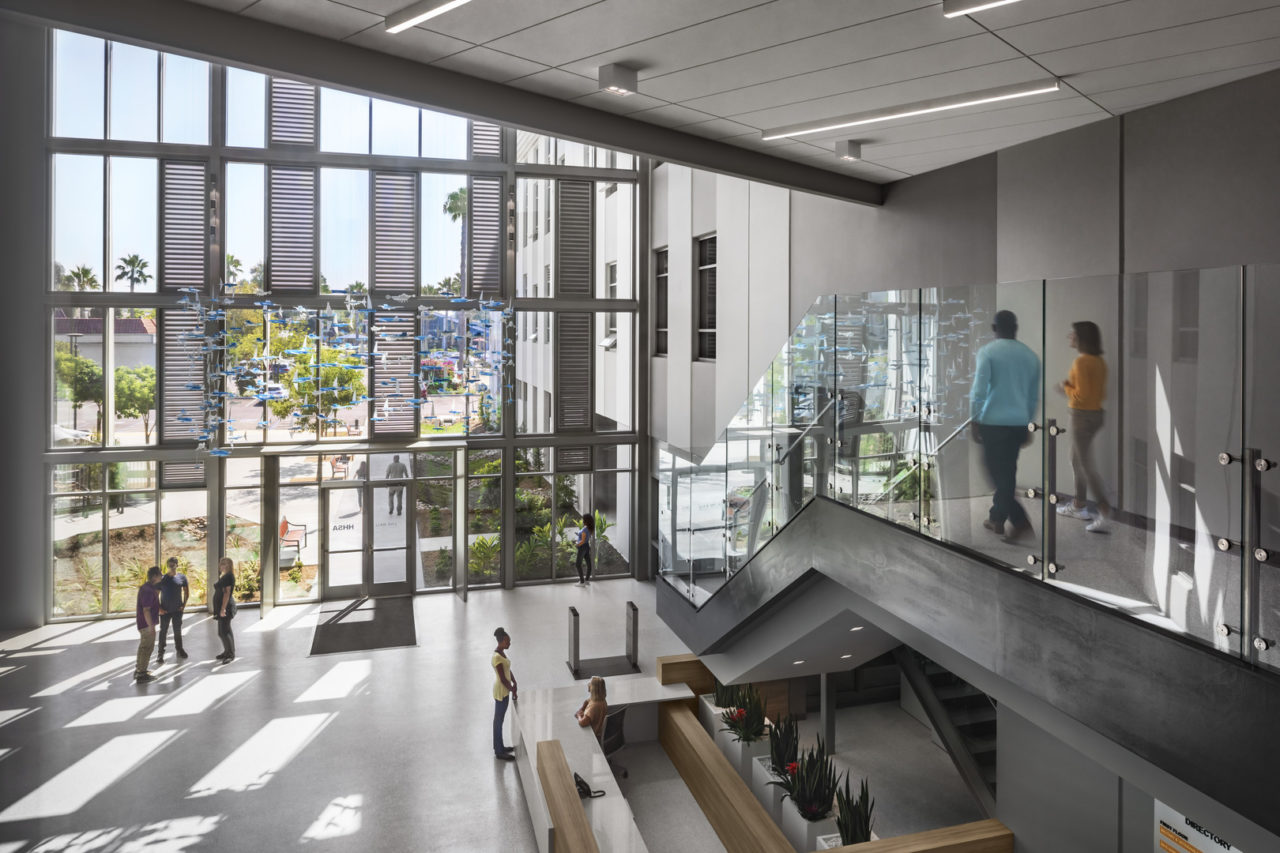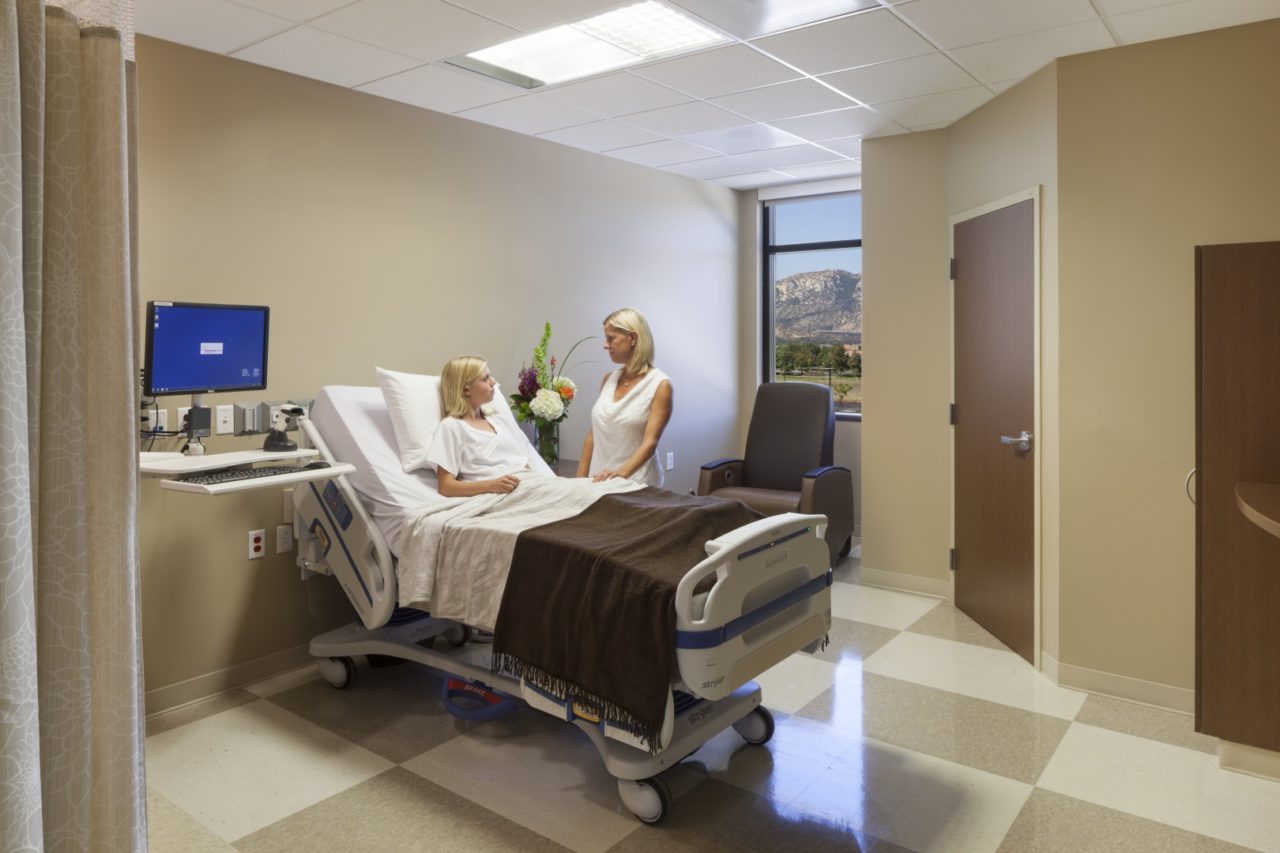Patient care is of the utmost importance when it comes to healthcare facility design. Where personnel have certain standards of practice for giving patients the best care possible, designers likewise have certain standards of design for delivering the best facility possible. When approaching healthcare design, there are many factors to consider, from the type of patients served, location of facility, and the overall philosophy of the practice.
Designing for Patient Expectations
When entering a healthcare facility, it’s safe to assume that most patients are going to have some level of anxiety. Their first interaction can set the tone for the entire experience, so it’s important to address a few initial design considerations:
- A Welcoming Front Desk. The check-in desk is typically the first space a patient experiences, so it’s important to make sure it is designed to be welcoming, with privacy from other waiting patients.
- Soothing Interior Finishes. The choices made in colors, finishes, and furnishings can greatly shape a patient’s experience. A good design will balance the feeling of cleanliness with the feeling of being welcoming and comforting. Soothing, cheerful colors are a great choice, as are furnishings that resist stains and are easily wiped down. Some facilities even incorporate art installations such as sculptures or murals to make their interior spaces more visually appealing to patients.
- Wayfinding. Healthcare facilities can be confusing to navigate when a patient initially enters them, so it’s important to have clear wayfinding to help them out. Clear and prominent signage, as well as high-tech solutions such as apps that can help guide them or update them on current wait times, can help ease patient anxiety.
- Access to Daylight and Nature. Daylight and fresh air have been shown to help aid overall healing and well-being for patients. Some facilities provide operable windows, while others design healing gardens that allow for patients to stroll amongst plants and get a bit of fresh air.
- Addressing Spiritual Needs. Most larger hospital facilities have some space dedicated to being a space where patients or family members can go to have a quiet space to meditate, pray or otherwise gain spiritual comfort.
When a patient enters a facility and can be immediately put at ease by good design, clear wayfinding, and friendly staff, it sets them up to feel cared for, and sends a message that the facility thinks about the needs and feelings of their patients, and wants them to receive the highest standard of care.
 Staff Needs Within Healthcare Facilities
Staff Needs Within Healthcare Facilities
Patient care standards are also met by understanding the needs of the staff that care for them. Similar to patients, staff members also need to have access to daylight and nature, and they also benefit from soothing interior design choices. Break rooms and sleeping areas ensure that staff are taking care of their own needs, whether that’s refueling during a shift or grabbing a nap to keep themselves sharp.
Room design also has a huge impact on the staff’s effectiveness in caring for their patients. Intuitive design that is the same for each space helps to reduce mistakes, and patient proximity to nurse stations allows them to keep a close eye on their charges. Even the distance needed to travel by staff can have an effect on how many patients they can see in any given day, allowing them to be more efficient and reduce patient wait times. When architects design for personnel and consider their needs to perform their job to the highest standard, they are also contributing towards the overall quality of patient care.
Designs That Reflect Patient Care Standards
Patient care standards are an important consideration throughout the entire design process, and it takes work to ensure that it’s being addressed in the correct way for each unique facility. At the Kaiser Fresno ED expansion project in Fresno, California, we needed to create a clear flow throughout the department. By using the existing department’s template, we had everything we needed to ensure a seamless transition. Calming wall murals using lots of spring colors contributed towards the overall feel of the space, and high ceilings and perimeter curtain walls allow for ample daylight access throughout the facility.
At the Temecula Valley Hospital in Temecula California, we took a hard look at standard layouts, and how we could make design changes to increase efficiency. Patient-centric decisions such as increasing patient room groupings to reduce the area-to-bed ratio and centralizing support areas to reduce staff walking distances allowed us to create a facility that was not only efficient in its operational costs but also translated into better patient care and satisfaction.
 Caring for patients is no simple task, but good design decisions can go a long way towards helping staff members perform their jobs to the highest standard. From active decisions such as distance between staff members and patient rooms to passive decisions like furnishings and wall color, the architecture of a space affects patients from the moment they step foot into a facility. Knowing what questions to ask the staff and what research to utilize for each unique project is the mark of a good healthcare designer, and these decisions will help to elevate the entire facility’s standard of care.
Caring for patients is no simple task, but good design decisions can go a long way towards helping staff members perform their jobs to the highest standard. From active decisions such as distance between staff members and patient rooms to passive decisions like furnishings and wall color, the architecture of a space affects patients from the moment they step foot into a facility. Knowing what questions to ask the staff and what research to utilize for each unique project is the mark of a good healthcare designer, and these decisions will help to elevate the entire facility’s standard of care.
At HMC Architects, we understand how facility design standards reflect patient care standards and are knowledgeable about how best to incorporate different techniques into your project. For more information about how the two concepts overlap, contact HMC today. For specific questions about how you can use design to increase patient care standards in your project, email Designer Haripriya Madireddi directly.




